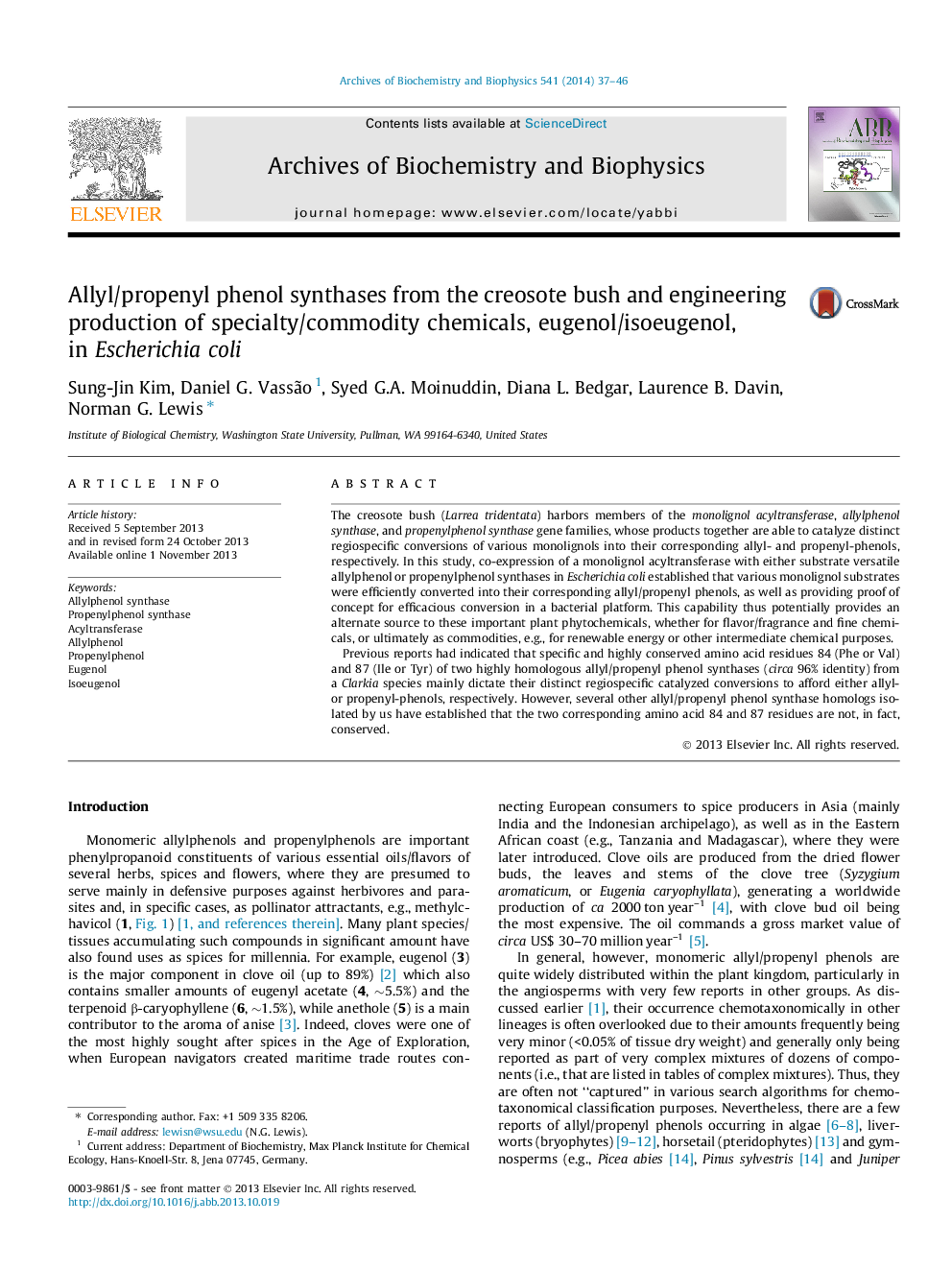| Article ID | Journal | Published Year | Pages | File Type |
|---|---|---|---|---|
| 1925283 | Archives of Biochemistry and Biophysics | 2014 | 10 Pages |
•Escherichia coli was genetically modified with allyl/propenylphenol pathway.•Monolignols were metabolized into ally/propenylphenols, eugenol, chavicol, etc.•E. coli serves as a platform for production of natural flavors/fragrances.•Regiospecificity was not controlled by amino acid residues 84 and 87.
The creosote bush (Larrea tridentata) harbors members of the monolignol acyltransferase, allylphenol synthase, and propenylphenol synthase gene families, whose products together are able to catalyze distinct regiospecific conversions of various monolignols into their corresponding allyl- and propenyl-phenols, respectively. In this study, co-expression of a monolignol acyltransferase with either substrate versatile allylphenol or propenylphenol synthases in Escherichia coli established that various monolignol substrates were efficiently converted into their corresponding allyl/propenyl phenols, as well as providing proof of concept for efficacious conversion in a bacterial platform. This capability thus potentially provides an alternate source to these important plant phytochemicals, whether for flavor/fragrance and fine chemicals, or ultimately as commodities, e.g., for renewable energy or other intermediate chemical purposes.Previous reports had indicated that specific and highly conserved amino acid residues 84 (Phe or Val) and 87 (Ile or Tyr) of two highly homologous allyl/propenyl phenol synthases (circa 96% identity) from a Clarkia species mainly dictate their distinct regiospecific catalyzed conversions to afford either allyl- or propenyl-phenols, respectively. However, several other allyl/propenyl phenol synthase homologs isolated by us have established that the two corresponding amino acid 84 and 87 residues are not, in fact, conserved.
